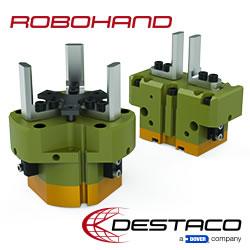Cisco Teams Up with Robotics Firm Fanuc for IoT
Google robotics to become a separate entity under Alphabet?
Advances in farming robotics could address shortage in agricultural workers
Technology gap gives foreign firms the edge in China robot wars
OMRON to Acquire U.S. Based Adept Technology
5 Robotics Stocks to Watch
Humanoid robot negotiates outdoor, rough terrain with ease
Gecko-inspired technology for 'climbing' space robots
Carnegie Mellon, GE Ventures bringing robotics accelerator program to Pittsburgh
Robotics firm GreyOrange raises $30 million, to expand overseas
Giving robots a more nimble grasp
Robo-Sabotage Is Surprisingly Common
Foxconn Seeks Manufacturing Sites in India
Chinese factory replaces 90% of humans with robots, production soars
Musk, Hawking, Chomsky: Why they want a ban on killer robots.
Records 436 to 450 of 849
First | Previous | Next | Last
Industrial Robotics - Featured Product

